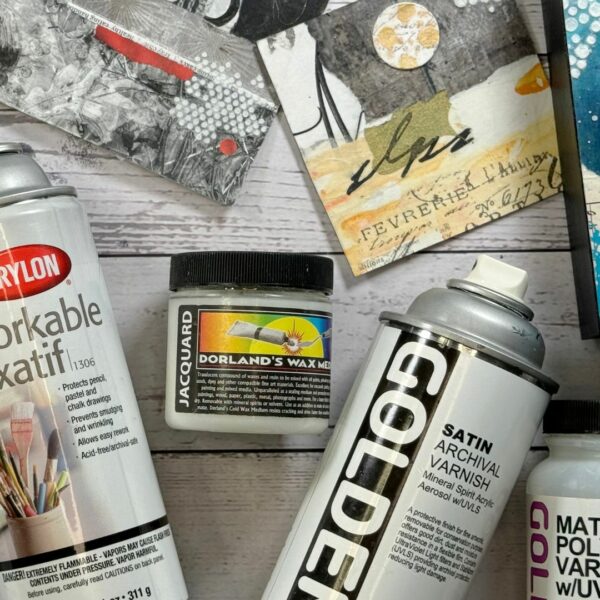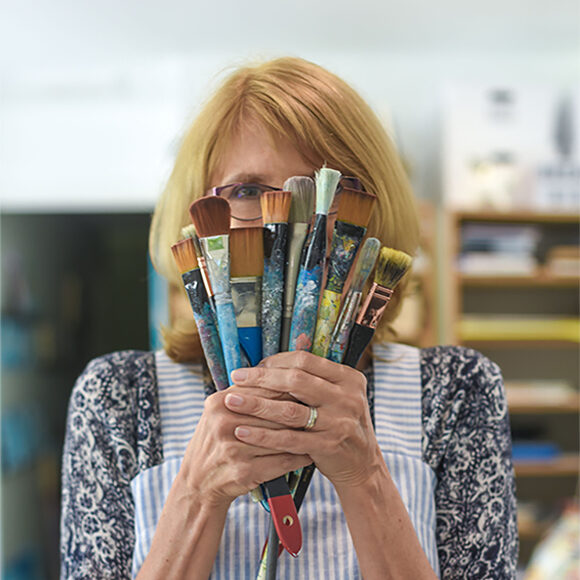/h5>
Whether working with water-soluble elements or you need a protective finish, follow this video to ensure your artwork lasts for years to come.
One of the most popular questions I get is, “How do I protect my collage when it’s finished?”. I’m super excited to share my tips and tricks on how to use fixative, varnish, and cold wax to do just that!
If you’ve worked with water-soluble elements in your artwork, you know that panic inducing moment when things start to smear and bleed! Fixative can be your best friend in this scenario. Spectrafix, is an environmentally safe option, although despite its eco-friendly charm, it does take more time and can sometimes be challenging to use. I typically go for Krylon Workable Fixative—a bit less “green”, but incredibly efficient. A single layer of spray (preferably outside) can seal your art and protect it from any unwelcome smears.
Next up is varnishing, but remember – only varnish when you’re completely done with your artwork. Once the varnish is on, there’s no going back! I share a couple of varnish options, such as my personal favorite, Golden Varnish with UV protection. Whether in liquid or spray form, this varnish is my go-to. The liquid option requires mixing and a lot of patience, but the spray form is a quick fix, especially for pieces with some texture.
And last but not least, I share my personal favorite for finishing artwork —Dorland’s Cold Wax – which can be both a sealant and varnish, providing a museum-quality finish. Applying Dorland’s wax can give your piece a subtle, satin sheen, and if you’re like me, you’ll appreciate how durable it makes your art. It’s perfect for adding a sleek, touchable finish, or even an encaustic look if you apply more than one layer.
Check out the video for more tips and all of the details on how to use fixative, varnish and wax. Please leave me a comment and let me know your favorite technique for finishing your work.
Subscribe to my YouTube and get notified every time I go live for my Tune in Tuesday art demos!
Supplies Used
Spectrafix
Krylon Workable Fixatif
Golden Archival Varnish Spray
Golden Polymer Varnish with UVLS (liquid)
Golden Gloss Medium
Dorland’s Wax Medium
*Some links are affiliate links which pay a small commission to support the production of this art demo series, while not costing you anything more.




I typically use a Liquitex gloss medium coat and then if I’m 100% sure I’m done, I’ll finish with a Liquitex gloss varnish. Never used the spray since it needs to be used outdoors. It’s rare to have a calm wind in my area.
Thanks so much for sharing your process with me. Makes total sense why you don’t use spray!
Do you use a gloss or satin varnish under the wax? I can’t wait to try the wax! Thanks for sharing.
You actually don’t have to use either varnish under the wax as the wax will act as a varnish. I use both just for double protection. And either gloss or satin varnish is fine.